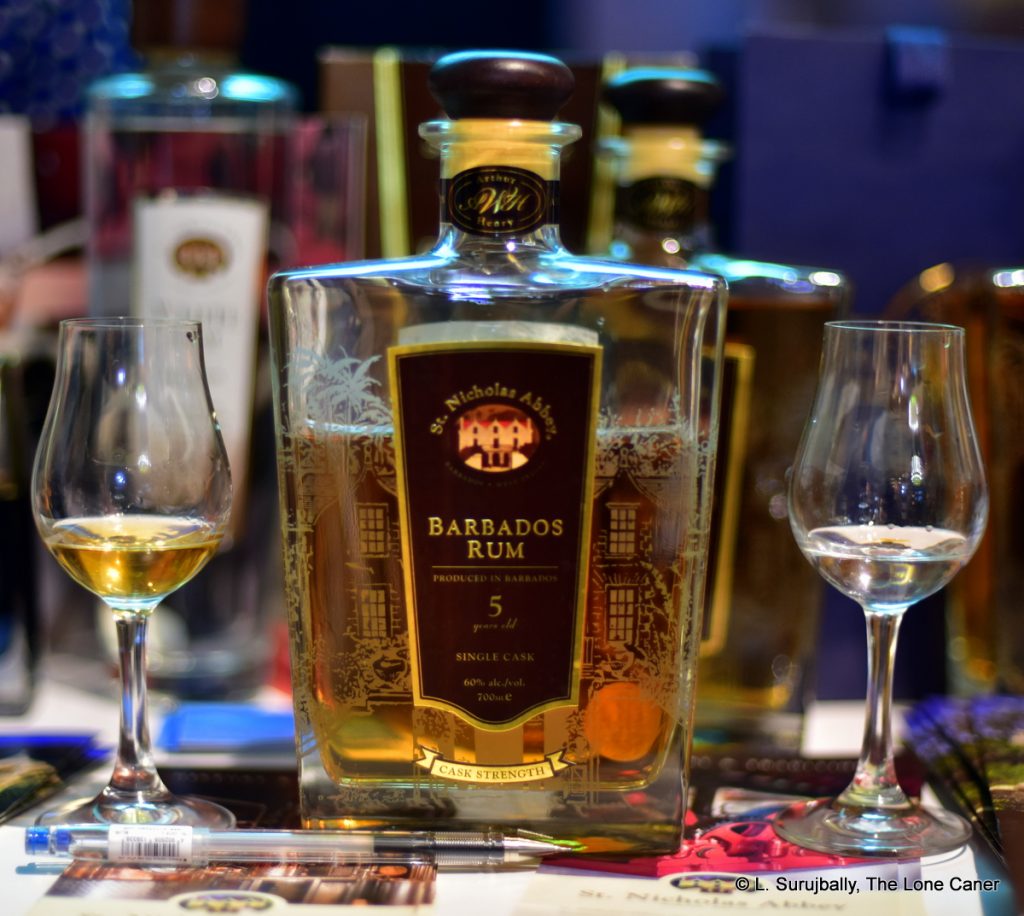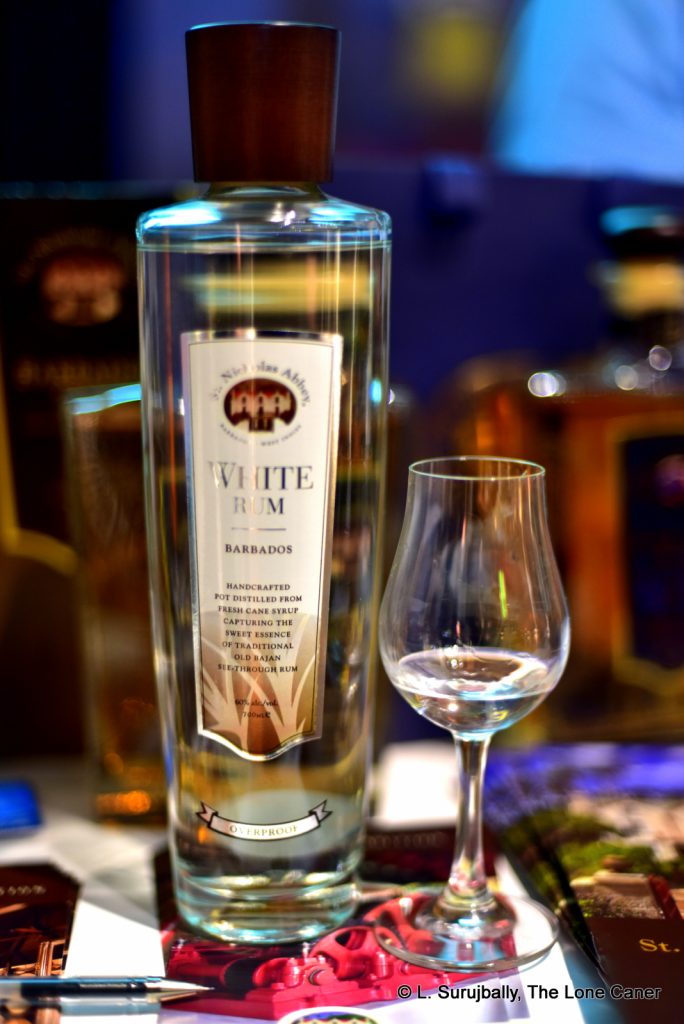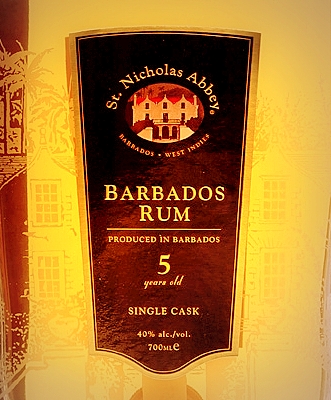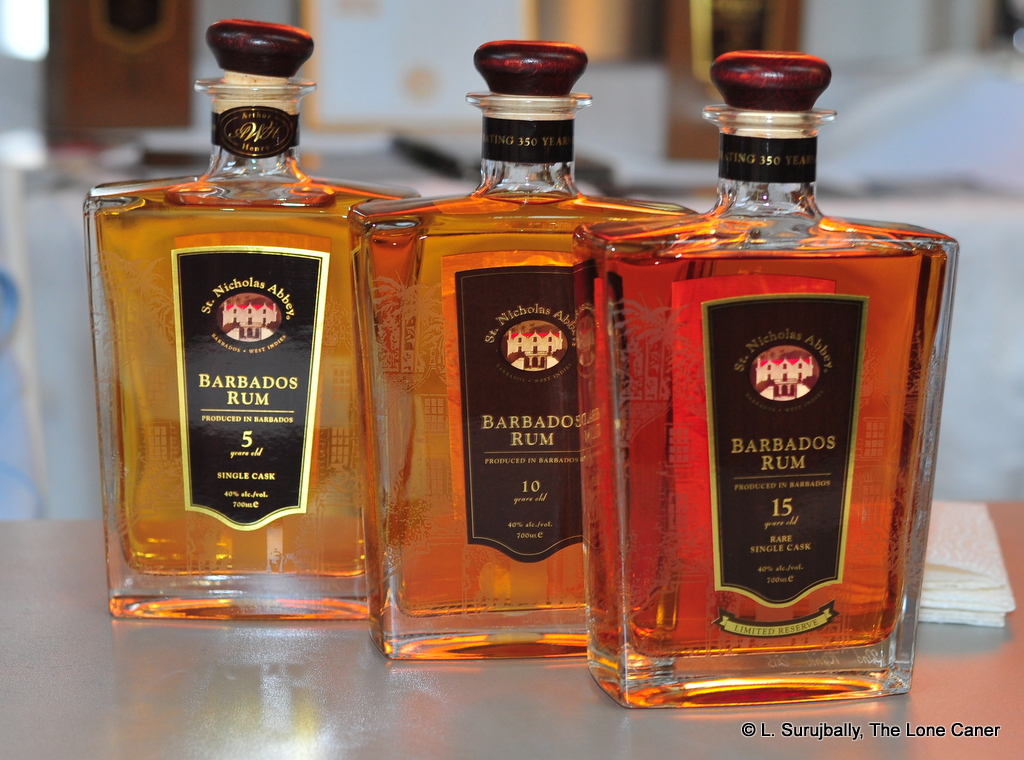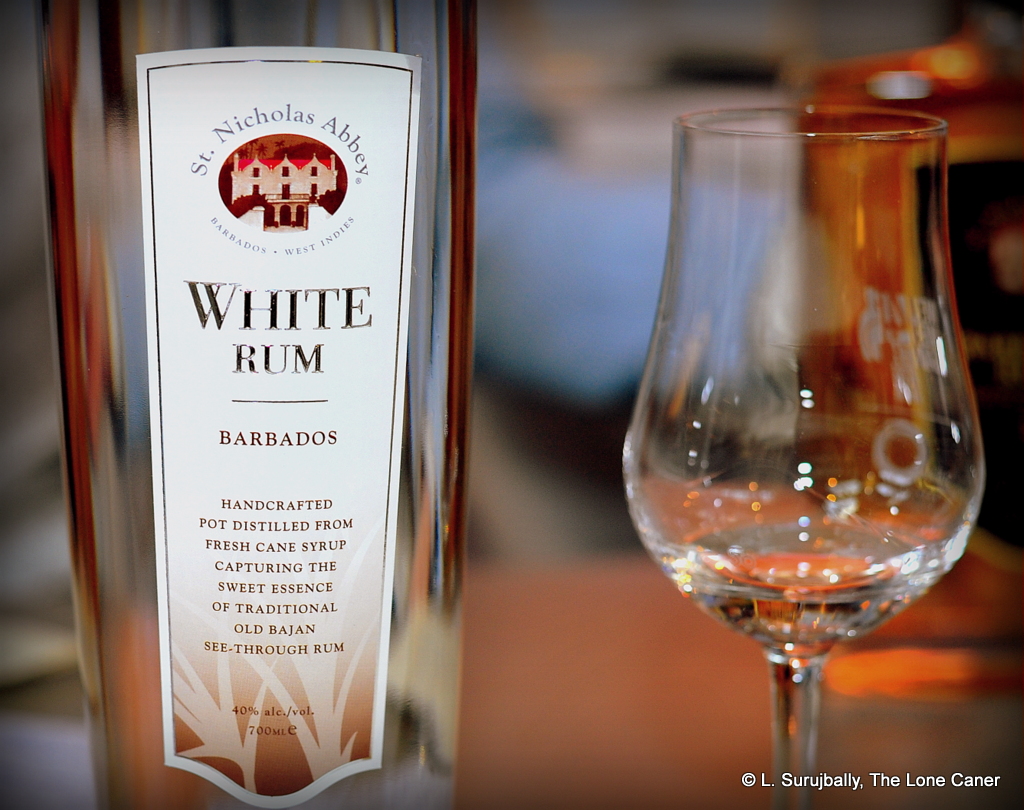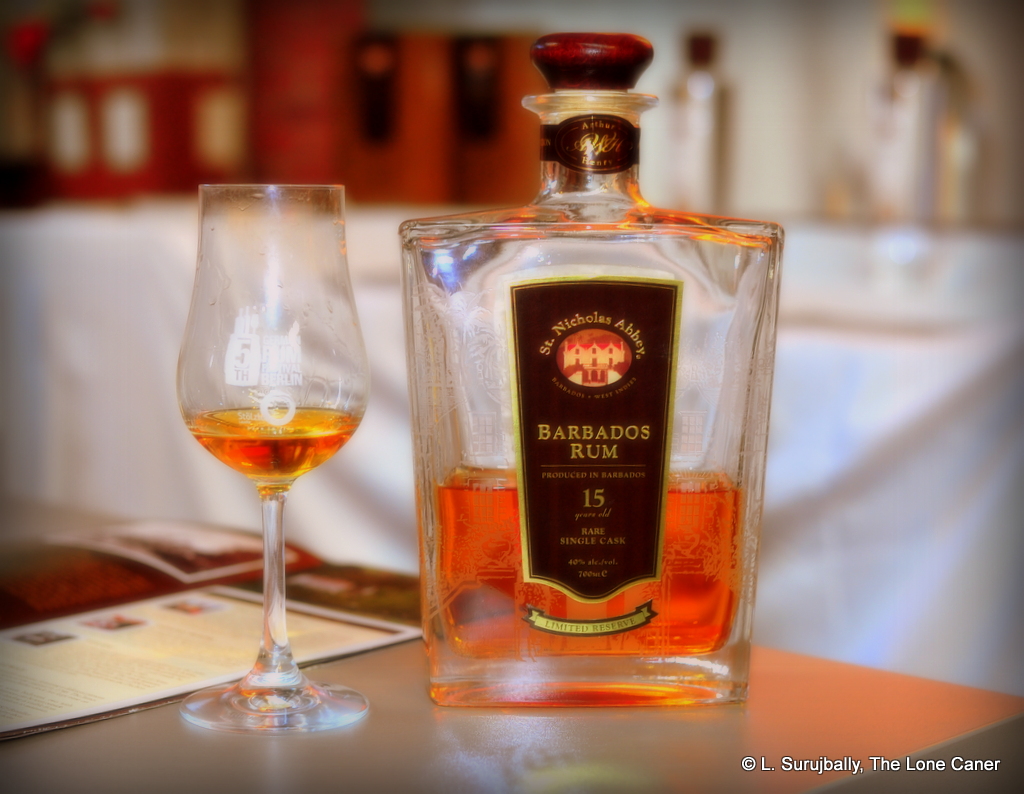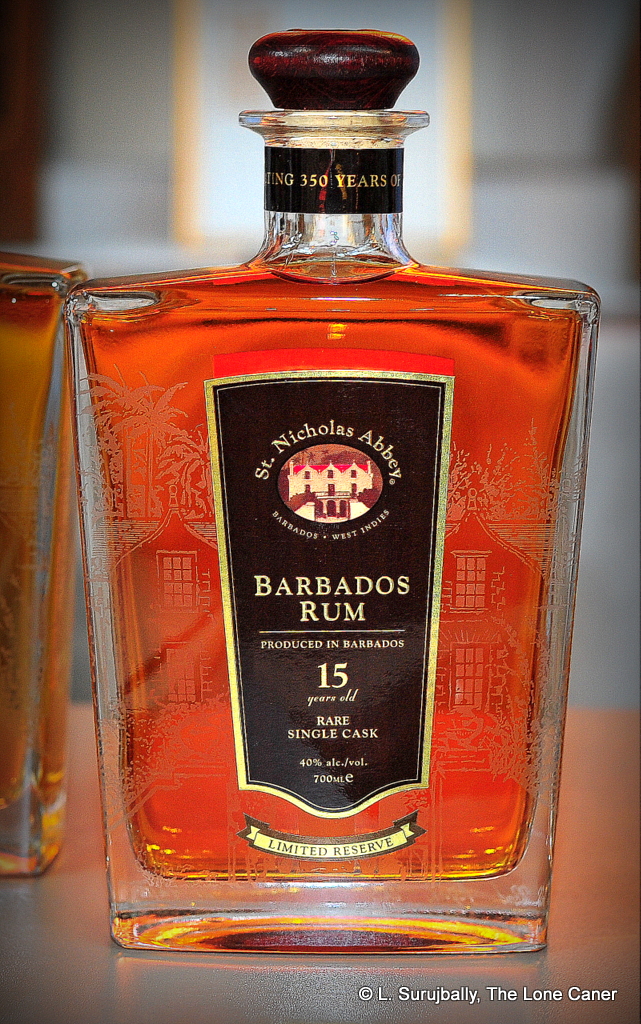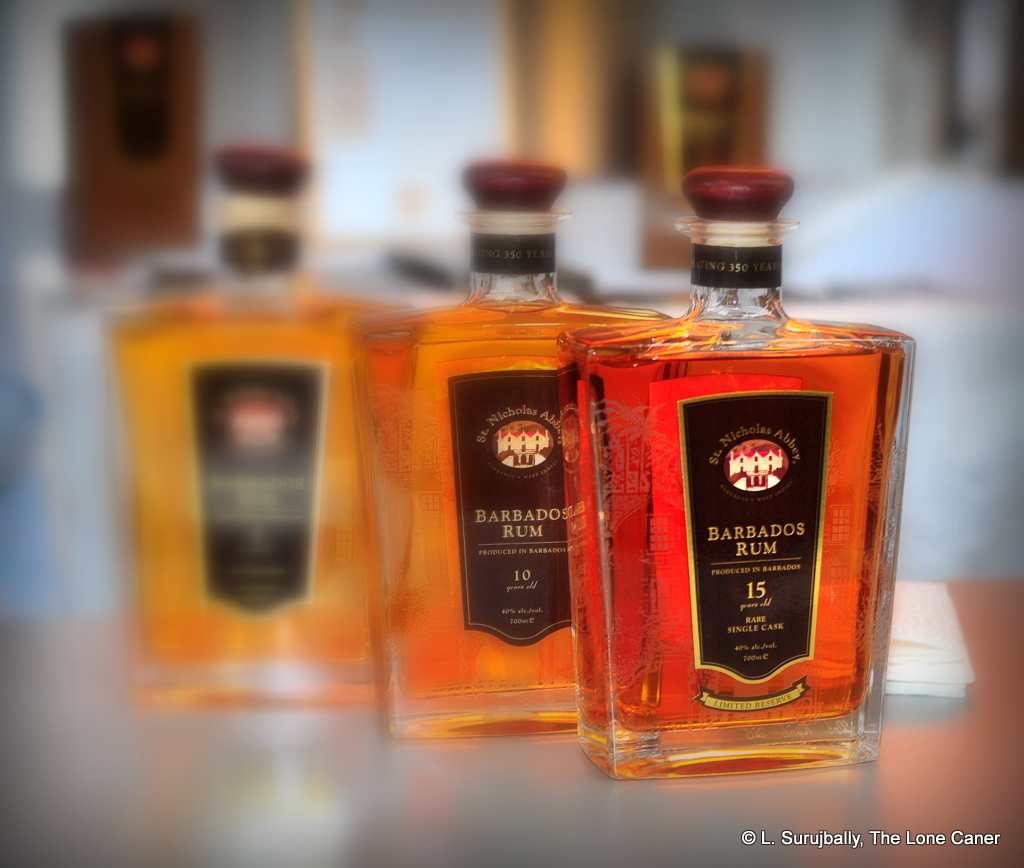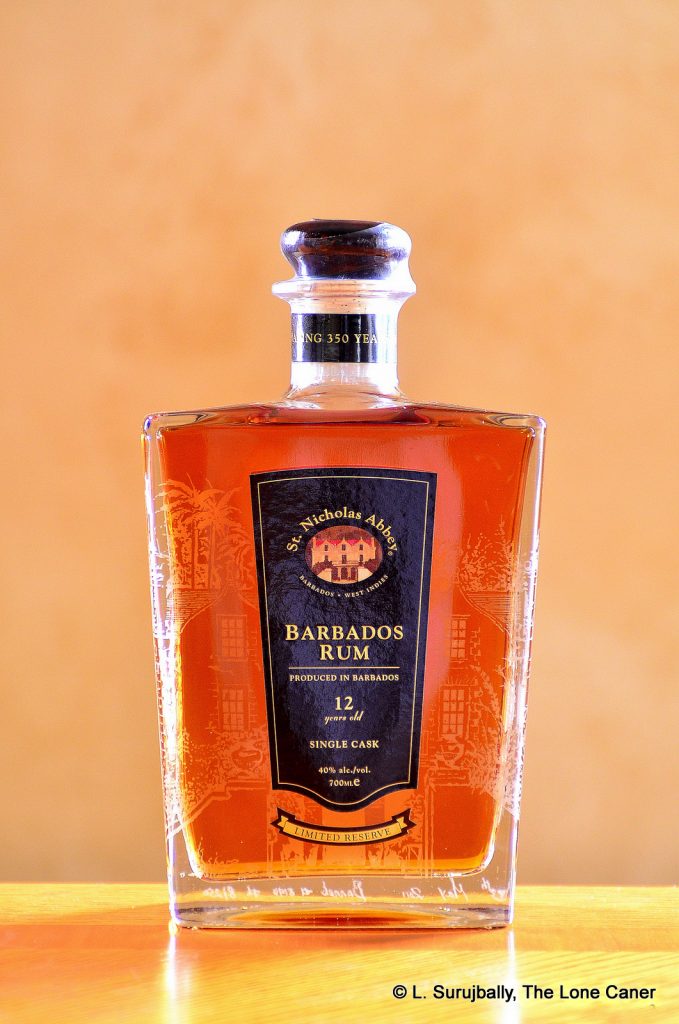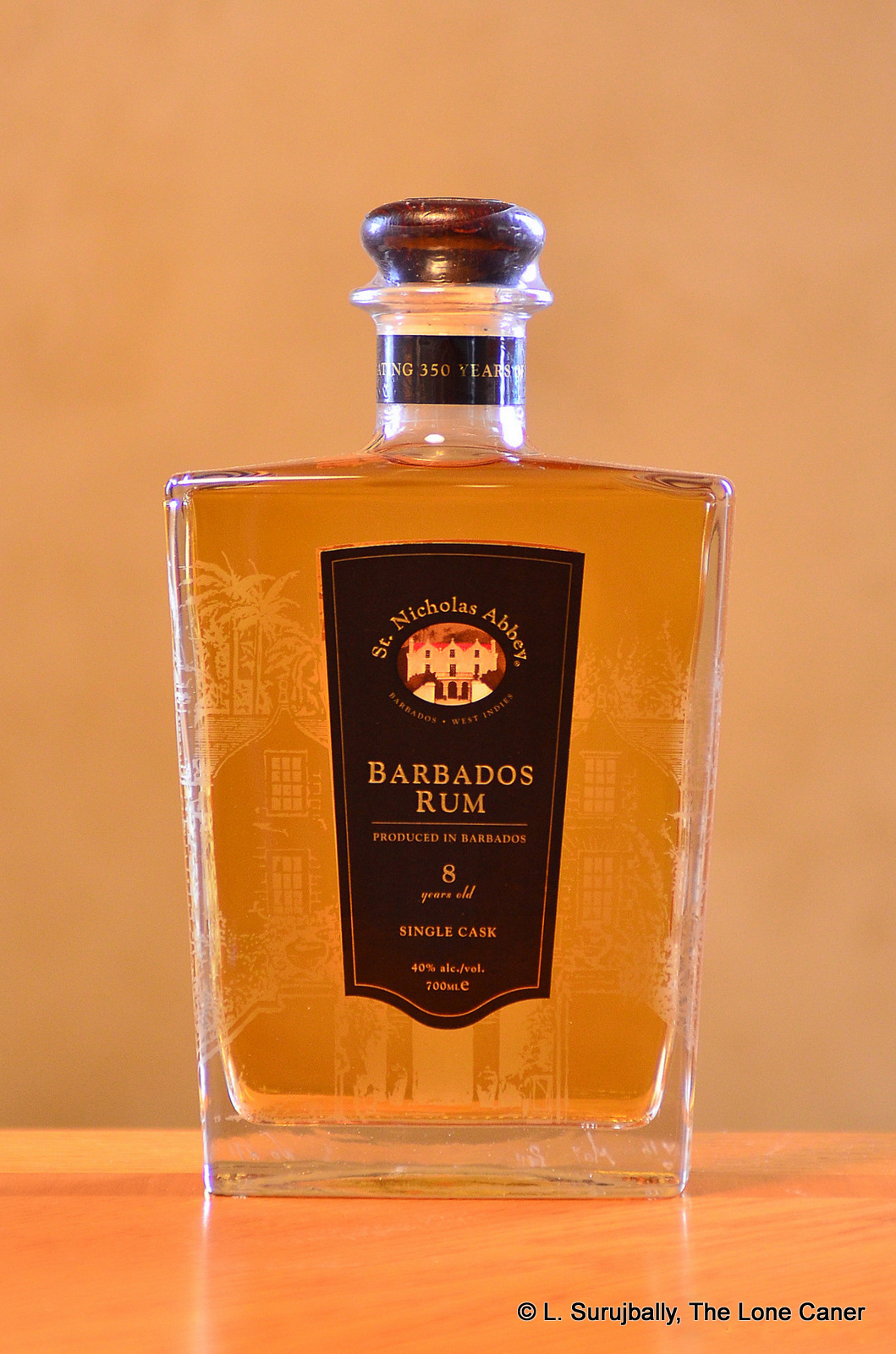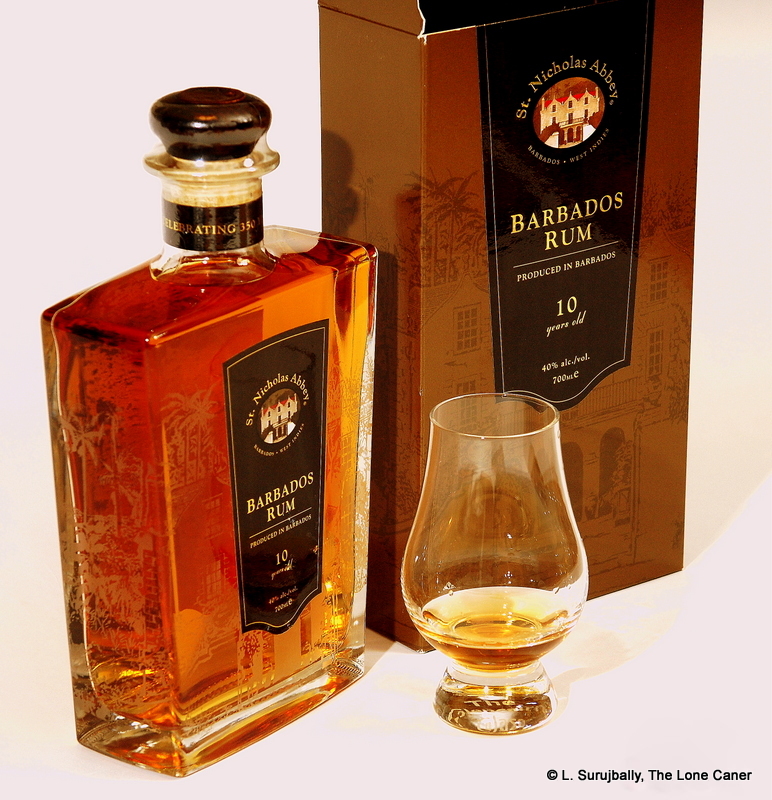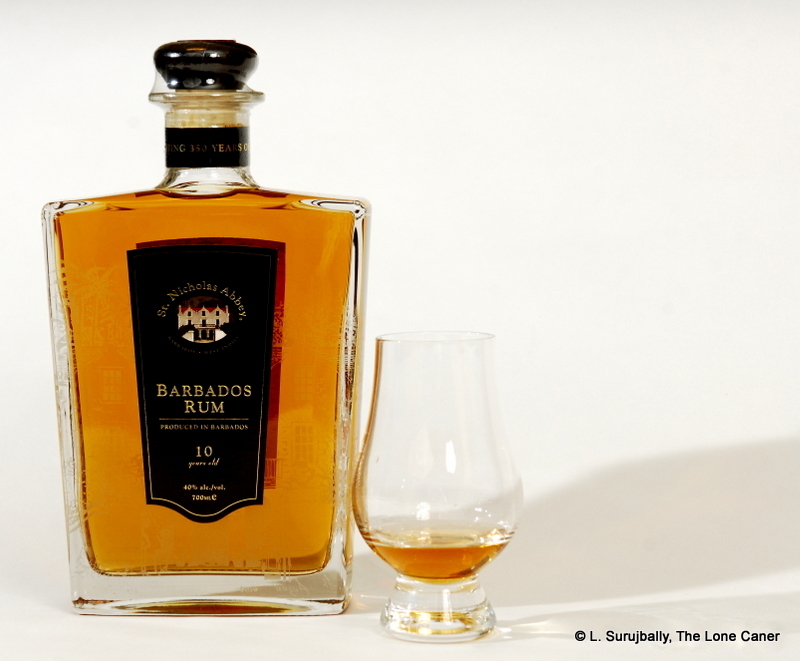Foursquare and WIRD and Mount Gay grab the lion’s share of social media attention from which originates so much of our news from Barbados, and so we sometimes overlook the fourth rum maker on the island, St. Nicholas Abbey. They are a small boutique distillery that became famous a decade ago for their lovely etched squarish bottles which you could once get refilled at a discount if you presented it at the distillery (maybe no longer now, alas).
SNA remains tiny in comparison with the other distilleries, run as part of a heritage site of the same name, and managed by the Warren family (see my original reviews here and here for some details), and at the beginning, bought rum stock from Foursquare down the road to get their program off the ground – Richard Seale also provided support and advice. Initially they issued 5, 10 and 12 YO aged rums — these were the first reviews of their line that I did — and over time this trio has been added to and developed into some much more high end hooches: a 15 and 18 and 20 YO and (heaven forbid) even a 23 YO…which admittedly I’ve never seen or tried (but want to). The rums were (and to some extent remain) rather more expensive than is the norm for similarly aged rums, which I know from personal experience; yet they sold and continue to sell, and these days SNA cultivates its own cane and makes its own rums rather than buying externally. What this has inevitably led to is a suite of younger rums like the unaged white, a white overproof — and a different 5YO than the one I sharpened my tasting buds on all those years ago.
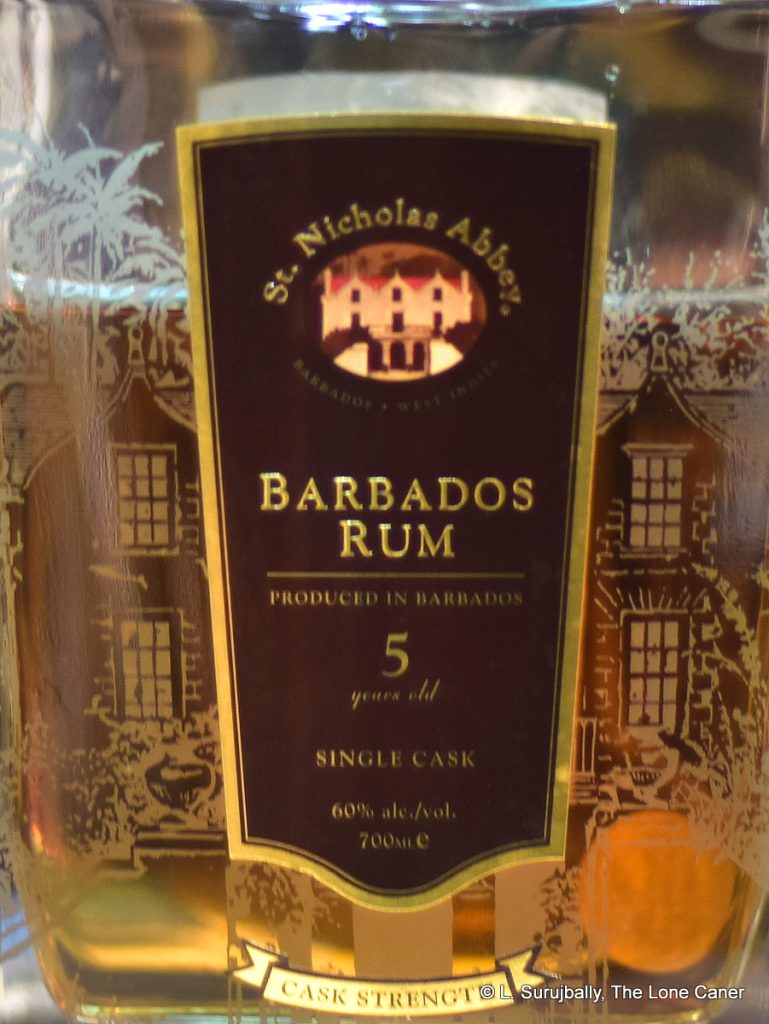 The stats for this 5YO, then: a lightish rum deriving from cane syrup (made in small batches from cane juice – so really, a sort of it-which-must-not-to-be-named agricole), coming off a pot-column hybrid still at 92% and then taken down to 65% or so for setting into ex-bourbon barrels. Like the white overproof it is a massive 60% ABV – and it’s a smart move to do so, since it allows the aficionados to get their intensity fix, while having exactly the same rum but weaker, sold to the general marketplace.
The stats for this 5YO, then: a lightish rum deriving from cane syrup (made in small batches from cane juice – so really, a sort of it-which-must-not-to-be-named agricole), coming off a pot-column hybrid still at 92% and then taken down to 65% or so for setting into ex-bourbon barrels. Like the white overproof it is a massive 60% ABV – and it’s a smart move to do so, since it allows the aficionados to get their intensity fix, while having exactly the same rum but weaker, sold to the general marketplace.
What surprises then, bearing in mind the tech sheet, is how relatively subdued the nose is at the beginning: some light and sweet honey, mead, plus a smorgasbord of white fruits (because of course there are); gradually one senses fanta, soda pop, 7Up, a little citrus, vanilla, and the slightly sour but still piquant sense of oranges gone off. The light fruits are always there, set off to some extent by brine, olives, unsweetened chocolate and the rich scent of overripe cashews (the ones with external seeds) which always reminds me of tequila for some reason.
The nose is somewhat rough, admittedly, and this is also the case on the palate. What saves it is the rich and multilayered texture and intensity of the tastes that are handed over. Green peas, peaches, fruits, fleshy and ripe and juicy; a very firm profile, quite spicy. Some unsweetened chocolate again, orange marmalade and a dusting of mint and vanilla, yet one misses the vaguely herbal and grassy notes which the source material suggests might be there. But anyway, it’s quite good, and the finish ends well: long, sweet and a little sour, some pineapple-in-syrup notes in the rear, mostly a nicely done fruit salad drizzled with Malibu and some fresh lime juice.
Chosing between the unaged overproof and this 5YO beefcake is pointless – they’re both good rums and serve different purposes. Trying them together, I enjoyed each of them…in different ways. I felt that overall the unaged white held somewhat more character and likely made a better cocktail, because it had not yet been changed or tamed by age or wood; on the other hand, it was lacking the additional complexity and sharp firmness the 5 YO OP was showcasing. In a pinch I’d try to get the pair. As for scores, well, back in the day I scored the standard strength 10-12-15 trio higher than I’m scoring this one now (if not by much): but whatever the score is, ultimately I think that this young overproof – with its level of controlled intensity and low-key voluptuousness – is pretty much on par with those venerable starter guns that SNA used to make its name all those years ago.
(#1022)(85/100) ⭐⭐⭐½
Other notes
- The rum is a blend without any years of distillation or bottling. They are evidently going for a long term consistent taste profile and specific barrels from specific years are the province of more premium bottlings up the line. The ‘single cask’ in the title suggests they decant a whole lot of rum into many casks at the same time, and blend them together over time within that set (otherwise they really would have years of make in the title)
- The bottles remain the same, with glass etching of the abbey house engraved on each, and a mahogany tipped stopper.
